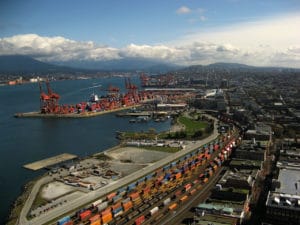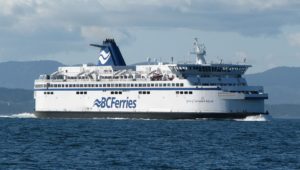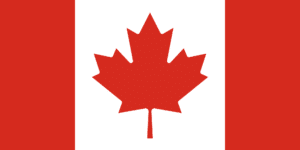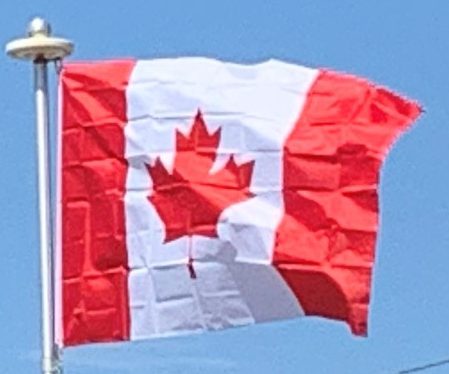Below is a table of Canada’s ten biggest airports by passenger traffic in 2011.
Rank Passengers
1 Toronto Pearson International Airport 33,435,280
2 Vancouver International Airport 17,032,742
3 Montréal-Pierre Elliott Trudeau International Airport 13,668,829
4 Calgary International Airport 12,770,988
5 Edmonton International Airport 6,089,099
6 Ottawa Macdonald-Cartier International Airport 4,473,894
7 Halifax Stanfield International Airport 3,508,153
8 Winnipeg James Armstrong Richardson International Airport 3,369,974
9 Victoria International Airport 1,514,713
10 Kelowna International Airport 1,391,725
Water:
Canada has several major ports on both ocean and river.

In addition, ferries are a critical component of the transportation system, especially in the Maritime provinces of the east but also in British Columbia as well.

Railways:
In 2007, Canada had a total of 44,870 miles of freight and passenger railway. While intercity passenger transportation by rail is now very limited, freight transport by rail remains common.
Nationwide passenger services are provided by the federal crown corporation Via Rail. Three Canadian cities have commuter rail services: in the Montreal area by AMT, in the Toronto area by GO Transit, and in the Vancouver area by West Coast Express. Smaller railways such as Ontario Northland, Rocky Mountaineer, and Algoma Central also run passenger trains to remote rural areas.
Public Transit:
Most Canadian cities have public transport, if only a bus system. Three Canadian cities have rapid transit systems, four have light rail systems, and three have commuter rail systems.
Government organizations across Canada owned 17,852 buses of various types in 2016. Organizations in Ontario (38.8%) and Quebec (21.9%) accounted for just over three-fifths of the country’s total bus fleet. Urban municipalities owned more than 85% of all buses.
Flag of Canada:
The flag of Canada (French: le drapeau du Canada), often referred to as the Canadian flag, or unofficially as the Maple Leaf and l’Unifolié (French for “the one-leafed”), is the national flag of Canada which consists of a red field with a white square at its center in the ratio of 1:2:1, in the middle of which is featured a stylized, red, 11-pointed maple leaf charged in the center. It is the first flag approved by Parliament for use as the country’s national flag.
In 1964, Prime Minister Lester B. Pearson formed a committee to resolve the ongoing issue of the lack of an official Canadian flag, sparking a serious debate about a flag change to replace the Union Flag. Out of three choices, the maple leaf design by George Stanley, based on the flag of the Royal Military College of Canada, was selected. The flag made its first official appearance on February 15, 1965; the date is now celebrated annually as National Flag of Canada Day.

The Canadian Red Ensign was unofficially used since the 1890s and approved by a 1945 Order in Council for use “wherever place or occasion may make it desirable to fly a distinctive Canadian flag”. Also, the Royal Union Flag remains an official flag in Canada.
